Il tempo di reazione gioca un ruolo fondamentale in innumerevoli attività, dalle prestazioni sportive alle decisioni quotidiane. Che tu sia uno sprinter che reagisce allo sparo, un pilota di F1 che affronta curve ad alta velocità o semplicemente che desideri migliorare la tua rapidità, padroneggiare il tempo di reazione può fare la differenza. Questo blog approfondisce tutto ciò che devi sapere sul tempo di reazione: come funziona, quali fattori lo influenzano e modi concreti per migliorarlo. Dal capire se un tempo di reazione di 200 ms è adeguato all'esplorazione di esercizi per migliorare i riflessi, questa guida completa è la tua guida per affinare la tua reattività.
SCARICA ORA L'APP SPLEEFT PER iOS, ANDROID E APPLE WATCH!
Scopri come migliorare il tempo di reazione:
Capire il tempo di reazione
È possibile aumentare il tempo di reazione?
Il tempo di reazione è l'intervallo tra uno stimolo e la risposta del corpo. Migliorare il tempo di reazione è un argomento di grande attualità, soprattutto tra atleti, gamer e professionisti che operano in settori in cui i processi decisionali sono rapidi. Ma è possibile aumentare il tempo di reazione? La risposta è sì: il tempo di reazione può essere migliorato attraverso un allenamento mirato, modifiche dello stile di vita e l'uso di strumenti avanzati.
Capire il tempo di reazione
Il tempo di reazione dipende da diversi fattori, tra cui età, livello di forma fisica, connessioni neurali e complessità del compito. Metodi di allenamento come esercizi di reazione, esercizi di coordinazione occhio-mano e sfide cognitive possono accelerare i tempi di risposta. Anche nutrizione, idratazione e sonno svolgono un ruolo significativo nel garantire una funzione neurale ottimale.
Se stai cercando come migliorare i tempi di reazione, non sei il solo: è un obiettivo fondamentale sia per gli atleti che per le persone comuni. Iniziare con semplici esercizi per i tempi di reazione, come esercizi di presa o leggeri colpetti, può fare una grande differenza. Un allenamento costante per i tempi di reazione, combinato con strumenti come Spleeft per monitorare i progressi, aiuta a sviluppare connessioni neurali più rapide e riflessi più acuti nel tempo.
Modi pratici per migliorare il tempo di reazione
- Esercizi pliometrici: Esercizi come i salti sul box e il lancio della palla medica possono allenare il corpo a rispondere rapidamente agli stimoli.
- Videogiochi: Alcuni giochi, in particolare gli sparatutto in prima persona, aiutano a migliorare la coordinazione occhio-mano e la rapidità nel prendere decisioni.
- Formazione alla consapevolezza: Tecniche come la meditazione e la respirazione concentrata migliorano la concentrazione e riducono il ritardo nella risposta.
Utilizzare app come Spleeft per monitorare l'efficienza neuromuscolare e le metriche in tempo reale può fornire informazioni basate sui dati sui propri progressi.
Misurazione del tempo di reazione

Un tempo di reazione di 200 ms è buono?
Quando si discute se un tempo di reazione di 200 ms sia adeguato, è importante considerare il contesto. Il tempo di reazione varia notevolmente a seconda del compito, della fascia d'età e dei requisiti professionali.
200 ms nei contesti quotidiani
Per la persona media, un tempo di reazione di 200 ms è considerato sopra la media e piuttosto buono. La maggior parte delle persone si attesta tra 250-270 ms. Raggiungere 200 ms indica forti percorsi neurali e reattività.
200 ms in contesti professionali
Per gli atleti d'élite o i gamer, 200 ms sono solidi ma non eccezionali. I piloti di Formula 1, ad esempio, spesso puntano a tempi di reazione intorno ai 150-180 ms a causa della natura ad alta velocità del loro sport. Migliorare da 200 ms richiede un allenamento dedicato e una pratica costante.
Un ottimo modo per valutare il tuo punto di partenza è attraverso un test sui tempi di reazione, che puoi fare a casa o tramite app. Una volta che conosci il tuo livello di base, capire come allenare i tempi di reazione diventa più facile, con esercizi mirati che spingono i tuoi limiti e mostrano miglioramenti misurabili nella reattività.
Un tempo di reazione di 300 ms è buono?
Un tempo di reazione di 300 ms è relativamente nella media, ma la sua importanza dipende dagli obiettivi e dall'attività specifica.
300 ms in contesti generali
Per le attività quotidiane come guidare o rispondere a conversazioni, un tempo di reazione di 300 ms è sufficiente. La maggior parte degli adulti rientra nell'intervallo 250-300 ms.
300 ms in contesti competitivi
Per gli atleti, i giocatori o chiunque richieda riflessi rapidi, il tempo di reazione di 300 ms potrebbe essere migliorato. I professionisti competitivi in genere puntano a meno di 200 ms per rimanere al top del loro gioco.
Il tempo di reazione di 120 è buono?
Un tempo di reazione di 120 ms è eccezionale e considerato eccezionale in tutti i contesti. Raggiungere questa velocità indica riflessi fulminei e un'eccellente efficienza neurale.
120 ms nel contesto
- Piloti di F1: Anche i piloti d'élite di Formula 1, noti per i loro riflessi straordinari, hanno una media di circa 150 ms.
- Limiti umani: Tempi di reazione inferiori a 100 ms sono biologicamente impossibili senza previsione, rendendo 120 ms uno dei tempi più rapidi ottenibili.
Per raggiungere o mantenere questo livello è necessaria una pratica rigorosa e attenzione a fattori quali il sonno, l'alimentazione e la gestione dello stress.
Il tempo di reazione di 180 è buono?
Un tempo di reazione di 180 ms è ottimo per la maggior parte delle persone e rientra nell'intervallo degli atleti professionisti e dei giocatori agonisti.
Perché 180 ms è considerato buono
- Pubblico generale: Per la persona media, tempi di reazione tra 200-250 ms sono comuni. Raggiungere 180 ms ti colloca in una categoria d'élite.
- Atleti e giocatori: Atleti e giocatori puntano a tempi di reazione inferiori a 200 ms per ottenere un vantaggio competitivo; 180 ms è considerato il massimo delle prestazioni.
Come mantenere o migliorare il tempo di reazione di 180 ms
Per sostenere o migliorare riflessi così rapidi, concentrati su un allenamento fisico costante, esercizi cognitivi e sul mantenimento di uno stile di vita sano. Utilizzare app come Spleeft per tracciare parametri come l'altezza del salto e la risposta neuromuscolare può aiutare a perfezionare le prestazioni.
È possibile un tempo di reazione di 100 ms?
Raggiungere un tempo di reazione di 100 ms è quasi impossibile per gli esseri umani in condizioni normali a causa di vincoli biologici. Tuttavia, alcuni fattori possono far sì che i tempi di reazione si avvicinino a questo limite.
Perché 100 ms sono biologicamente improbabili
- Velocità di trasmissione neurale: Il sistema nervoso umano ha un ritardo naturale di circa 120 ms tra lo stimolo e la risposta.
- Processo decisionale: Anche i riflessi più rapidi richiedono pochi millisecondi di elaborazione cognitiva.
- Limitazioni dell'attivazione muscolare: L'attivazione dei muscoli in risposta a uno stimolo aggiunge ulteriore tempo.
Casi di tempi di reazione più rapidi
In alcuni scenari, gli individui possono sembrare in grado di raggiungere tempi di reazione di 100 ms anticipando lo stimolo anziché reagendo ad esso. Ad esempio:
- Velocisti:All'inizio di una gara, i corridori potrebbero reagire più rapidamente a causa dell'anticipazione piuttosto che per una pura reazione.
- Giocatori:I giochi basati sui riflessi potrebbero occasionalmente registrare tempi inferiori a 120 ms a causa di azioni preventive.
Qual è il tempo di reazione più rapido di un essere umano?
Il tempo di reazione più rapido mai registrato è di circa 120 ms, ottenuto in condizioni ideali in cui gli stimoli e i percorsi di risposta sono ottimizzati.
Limiti del tempo di reazione umana
Il tempo di reazione è limitato dalle velocità di trasmissione neurale e dai processi decisionali nel cervello. Le azioni riflesse, come allontanare la mano da una superficie calda, sono più rapide perché bypassano il pensiero cosciente.
Esempi di tempi di reazione rapidi
- Piloti di F1: raggiungono costantemente i 150 ms durante le gare.
- Giocatori d'élite: spesso reagiscono tra 150 e 200 ms durante le partite più intense.
Superare la barriera dei 120 ms è quasi impossibile, poiché ciò richiederebbe al sistema nervoso di funzionare più velocemente dei suoi limiti biologici.
Migliorare il tempo di reazione

Come posso migliorare la mia rapidità?
Partendo dalla rapidità, molte persone si chiedono come aumentare i tempi di reazione per migliorare le prestazioni nello sport o nella vita quotidiana. Incorporare esercizi per i tempi di reazione, come le scale di agilità o il lancio della palla, nella propria routine è essenziale. Per un allenamento strutturato dei tempi di reazione, app come Spleeft offrono feedback in tempo reale, aiutando ad affinare la tecnica e a vedere come piccoli cambiamenti portino a risposte più rapide.
La rapidità è la combinazione di velocità e agilità, entrambe dipendenti da tempi di reazione rapidi. Per migliorare la rapidità, concentrati su esercizi che migliorano la coordinazione, la forza e l'elaborazione cognitiva.
Suggerimenti per aumentare la rapidità
- Esercizi di agilità: Per migliorare la velocità e la coordinazione, usate esercizi con i coni, esercizi con la scala e salti laterali.
- Allenamento della forza: Sviluppa una potenza esplosiva con squat, affondi ed esercizi pliometrici.
- Esercizi cognitivi: I giochi di allenamento del cervello e gli esercizi di reazione affinano il processo decisionale.
- Allenamento a intervalli: Gli intervalli ad alta intensità imitano le richieste di rapidità della vita reale.
- Feedback in tempo reale: App come Spleeft monitorano le metriche delle prestazioni per garantire miglioramenti misurabili.
Come allenare i tempi di reazione?
Allenare i tempi di reazione richiede esercizi mirati che coinvolgano sia la mente che il corpo. I tempi di reazione sono il risultato di percorsi neurali che comunicano in modo efficiente con i muscoli e l'allenamento può aiutare ad affinare questa connessione. Che tu sia un atleta, un gamer o semplicemente qualcuno che cerca di migliorare la reattività quotidiana, ci sono molti modi per migliorare questa abilità.
Allenamento di reazione fisica
- Esercizi con la palla di reazione: Queste palline imprevedibili rimbalzano in direzioni diverse, richiedendo una rapida coordinazione occhio-mano e riflessi.
- Test di caduta del righello del partner: Un semplice test in cui un partner lascia cadere un righello e tu lo raccogli il più velocemente possibile.
- Inizio sprint: Reagire a un segnale sonoro per iniziare uno sprint migliora il tempo di reazione uditiva e la risposta fisica esplosiva.
- Boxe ombra: Ciò migliora la velocità di reazione e la coordinazione, impegnando contemporaneamente corpo e mente.
Allenamento cognitivo
- Giochi mentali: Le app che stimolano il processo decisionale e la risoluzione dei problemi migliorano l'elaborazione cognitiva.
- Schede di reazione alla luce: Strumenti interattivi in cui le luci lampeggiano in modo casuale e puoi toccarle il più velocemente possibile.
Esercizi di reazione specifici per lo sport
Se ti stai allenando per uno sport specifico, imita gli scenari che dovrai affrontare. Ad esempio, i portieri possono esercitarsi a parare tiri imprevedibili, mentre i piloti usano simulatori per replicare decisioni ad alta velocità.
Come aumentare la velocità dei riflessi?
Aumentare la velocità dei riflessi richiede una combinazione di allenamento fisico e mentale. I riflessi sono legati ai percorsi neurali, alla risposta muscolare e all'elaborazione cognitiva, tutti aspetti che possono essere migliorati. Se ve lo state chiedendo... come aumentare la velocità di reazione, diamo un'occhiata.
Suggerimenti per aumentare la velocità dei riflessi
- Esercizi di reazione: Per allenare le risposte rapide, usate strumenti come palle di reazione o tavole luminose.
- Allenamento della forza: Sviluppare una potenza esplosiva nei muscoli riduce i tempi di risposta durante le azioni fisiche.
- App per allenare il cervello: I giochi che richiedono decisioni rapide migliorano l'elaborazione cognitiva.
- Yoga e Meditazione: Riduci lo stress e migliora la concentrazione, migliorando la tua capacità di rispondere rapidamente.
- Idratazione e nutrizione: Mantenersi idratati e consumare alimenti che stimolano il cervello, come gli omega-3, aiuta a mantenere efficienti i percorsi neurali.
È possibile migliorare il tempo di reazione?
Sì, il tempo di reazione può essere decisamente migliorato. Sebbene la genetica e l'età giochino un ruolo, un allenamento costante, la concentrazione mentale e uno stile di vita sano possono portare a guadagni significativi.
Modi per migliorare il tempo di reazione
- Allenamento pliometrico: Esercizi come gli squat saltati e i salti in profondità migliorano l'efficienza neuromuscolare, aiutando a reagire più velocemente agli stimoli fisici.
- Giochi basati sulla reazione: I giochi che richiedono riflessi rapidi e capacità decisionali migliorano i tempi di risposta in modo divertente e coinvolgente.
- Pratiche di consapevolezza: Tecniche come lo yoga e la meditazione aiutano a ridurre lo stress e a migliorare la concentrazione, affinando la velocità di reazione cognitiva.
- Supporto nutrizionale: L'assunzione di acidi grassi omega-3, l'idratazione e l'evitamento di eccessi di caffeina e alcol possono migliorare le funzioni cerebrali.
La chiave per il miglioramento sta nella costanza. Combinare esercizi fisici e mentali assicura che sia il cervello che il corpo siano preparati per reazioni più rapide.
Perché i miei tempi di reazione sono così scarsi?
I problemi con i tempi di reazione lenti possono avere diverse cause, molte delle quali sono gestibili.
Motivi comuni per tempi di reazione scarsi
- Mancanza di sonno: La privazione del sonno compromette le funzioni cognitive e rallenta la trasmissione neurale.
- Stress e ansia: Livelli di stress elevati possono portare a pensare troppo e a ritardare le risposte.
- Inattività fisica: Uno stile di vita sedentario indebolisce la risposta muscolare e la coordinazione.
- Carenze nella dieta: Un'alimentazione inadeguata, in particolare bassi livelli di omega-3 o disidratazione, può ostacolare le funzioni cerebrali.
- Invecchiamento: I cambiamenti naturali legati all'età rallentano la trasmissione neurale e i riflessi.
Soluzioni per tempi di reazione migliori
Il miglioramento del tempo di reazione implica un mix di forma fisica, allenamento cognitivo e recupero adeguato. Utilizzare strumenti come Spleeft per tracciare le prestazioni neuromuscolari può fornire spunti sulle aree di miglioramento.
Esercizi e tecniche per migliorare i tempi di reazione
Quali sono i 5 esercizi per migliorare i tempi di reazione?
- Scopri come migliorare i tempi di reazione con varianti di questi esercizi, ad esempio aggiungendo imprevedibilità per applicazioni nel mondo reale.
- Utilizza un test sui tempi di reazione prima e dopo le sessioni per monitorare con precisione i miglioramenti.
- Per gli utenti avanzati, è possibile integrare le metriche di Spleeft per personalizzare l'allenamento sui tempi di reazione e massimizzare i guadagni.
Per migliorare il tempo di reazione è necessaria una pratica costante con esercizi pensati per mettere alla prova i tuoi riflessi e le tue capacità decisionali. Di seguito sono riportati cinque esercizi efficaci per migliorare la tua velocità di reazione:
1. Esercizi con la palla di reazione
Usa una palla di reazione (una palla con superfici irregolari) che rimbalza in modo imprevedibile. Questo aiuta ad allenare i riflessi e ad affinare la coordinazione occhio-mano.
2. Test di caduta del partner
Chiedi a un compagno di tenere in mano un righello o un piccolo oggetto e di lasciarlo cadere senza preavviso. Il tuo obiettivo è di prenderlo il più velocemente possibile, migliorando la coordinazione occhio-mano.
3. Esercizi di reazione leggera
Utilizza app o lavagne luminose specializzate che lampeggiano luci casuali. Reagisci premendo o toccando le luci quando appaiono, concentrandoti sulla velocità e sulla precisione.
4. Partenze sprint
Inizia gli sprint da una posizione eretta in risposta a un segnale sonoro. Questo esercizio allena il tuo corpo a muoversi rapidamente dopo stimoli uditivi.
5. Esercizi di riflessi nel pugilato
Praticare shadowboxing o usare il sacco da boxe può migliorare sia la velocità di reazione che l'agilità, aiutandoti a reagire più velocemente in situazioni di forte pressione.
Incorporare questi esercizi nella tua routine migliorerà la velocità dei riflessi e l'efficienza neurale.
Come migliorare i tempi di reazione in gara?
Le corse, che siano in F1 o nel karting, richiedono decisioni in frazioni di secondo. Migliorare il tempo di reazione per le corse implica esercizi e simulazioni specializzate per replicare le pressioni degli ambienti ad alta velocità.
Passaggi per affinare i riflessi di corsa
- Scenari di gara simulati: Utilizzare simulatori per allenare il processo decisionale e migliorare le risposte agli eventi imprevisti.
- Allenamento visivo: Migliora la visione periferica e la percezione della profondità per anticipare i cambiamenti in pista.
- Esercizi basati sulla luce: Incorporare esercizi come le tavole luminose Batak per allenare le risposte rapide agli stimoli visivi.
- Allenamento fitness: Rafforza i muscoli del collo e del core per mantenere il controllo durante i movimenti rapidi.
Come allenano i piloti di F1 i tempi di reazione?

I piloti di Formula 1 sono tra gli esseri umani più veloci quando si tratta di tempo di reazione. In media, i piloti di F1 vantano un tempo di reazione di circa 150-180 ms. Ma come allenano i piloti di F1 il tempo di reazione per rimanere acuti e competitivi?
1. Allenamento con la tavola leggera
I conducenti utilizzano tavole di reazione luminosa, come il sistema Batak, in cui rispondono a luci casuali che appaiono su una tavola. Ciò affina i riflessi e migliora il tempo di reazione visiva.
2. Simulazioni virtuali
I simulatori di corsa riproducono scenari di vita reale, sfidando i piloti a reagire rapidamente a eventi simulati ad alta velocità, come sorpassi e incidenti.
3. Esercizi neurologici
Gli esercizi di eye tracking e i programmi di allenamento della vista migliorano la concentrazione, la visione periferica e la velocità di reazione.
4. Allenamento fisico
Il rafforzamento dei muscoli del core, il miglioramento dell'equilibrio e il mantenimento della forma fisica generale consentono ai conducenti di prendere decisioni in una frazione di secondo, senza indugio.
5. Riposo e recupero
Un sonno adeguato e tecniche di rilassamento sono essenziali per mantenere il cervello e il corpo al massimo delle loro prestazioni.
Con il fermento che circonda le reazioni dei piloti del film di Formula 1 "2025", è affascinante vedere come le rappresentazioni sullo schermo mettano in risalto i riflessi intensi necessari nelle corse. Nella realtà, i piloti usano questi metodi per affinare le proprie abilità, e principi simili possono essere applicati anche a casa. Che siate ispirati dal film o dai vostri obiettivi personali, imparare ad allenare i tempi di reazione attraverso simulazioni ed esercizi può portare una reattività di livello cinematografico alle vostre prestazioni: monitorate tutto con Spleeft per approfondimenti precisi.
Tempo di reazione in diversi contesti
A che età si raggiunge il picco del tempo di reazione?
Il tempo di reazione raggiunge in genere il picco tra i 20 e i 30 anni, quando l'efficienza neurale e la coordinazione muscolare sono al massimo. Tuttavia, questo non significa che anche le persone più anziane non possano mantenere o migliorare i propri tempi di reazione.
Fattori che influenzano il tempo di reazione massimo
- Velocità neurale: Nei giovani adulti la trasmissione neurale è più rapida, il che contribuisce a riflessi più rapidi.
- Efficienza muscolare: La forza muscolare e la reattività sono ottimali intorno ai 20 anni.
- Elaborazione cognitiva: La memoria e la velocità decisionale raggiungono il massimo livello nella prima età adulta.
Mantenere il tempo di reazione oltre il picco
Mentre i tempi di reazione possono naturalmente diminuire con l'età, un allenamento regolare, una corretta alimentazione e uno stile di vita sano possono minimizzare gli effetti. Strumenti come Spleeft forniscono metriche per tracciare le prestazioni neuromuscolari, aiutando gli utenti ad adattare il loro allenamento per mantenere la massima reattività.
Qual è il tempo medio di reazione di un pilota di F1?
I piloti di Formula 1 sono rinomati per i loro riflessi fulminei. Il tempo di reazione medio per un pilota di F1 è di circa 150 millisecondi, rendendoli tra gli esseri umani con la reazione più rapida al mondo.
Come i piloti di F1 ottengono tempi di reazione rapidi
- Formazione costante: Gli autisti si esercitano regolarmente con tavole di reazione, simulatori ed esercizi leggeri per affinare i propri riflessi.
- Acutezza neurologica: I conducenti migliorano le funzioni cognitive attraverso attività che stimolano la concentrazione e il processo decisionale.
- Forma fisica: L'allenamento della forza e della resistenza aiuta i piloti a reagire rapidamente e a mantenere le massime prestazioni durante le gare.
- Gestione dello stress: Gestire lo stress e mantenere la calma sotto pressione garantisce una funzionalità neurale ottimale.
Tempo di reazione durante le gare
In situazioni ad alto rischio, come evitare collisioni o sorpassare avversari, i tempi di reazione dei piloti di F1 sono fondamentali. La loro capacità di elaborare informazioni visive ed eseguire movimenti precisi nell'arco di millisecondi li rende straordinari.
Conclusione: sblocca il tuo pieno potenziale attraverso l'allenamento del tempo di reazione
Migliorare i tempi di reazione non significa solo muoversi più velocemente: significa costruire la sinergia mentale e fisica che consente di agire con decisione ed efficacia. Che il vostro obiettivo sia ridurre di millisecondi la vostra risposta negli sport agonistici, migliorare i riflessi nelle attività quotidiane o eguagliare i tempi di reazione fulminei dei piloti di F1 d'élite, gli strumenti e le strategie delineati in questa guida offrono un percorso chiaro da seguire.
Dagli esercizi mirati alla velocità dei riflessi all'esplorazione dei fattori genetici e neurologici che influenzano il tempo di reazione, questo blog sottolinea che il miglioramento è alla portata di chiunque sia disposto a impegnarsi. Integrando una pratica costante, mantenendo uno stile di vita sano e utilizzando strumenti avanzati come Spleeft per monitorare i progressi, è possibile ottenere tempi di reazione che ti distinguono. In definitiva, padroneggiare come aumentare il tempo di reazione dipende dalla dedizione e dagli strumenti giusti. Dagli esercizi per i tempi di reazione personalizzati in base al tuo livello all'allenamento continuo per i tempi di reazione, la strada è tracciata. E con l'entusiasmo delle reazioni dei piloti del film di Formula 1 2025 che mettono in mostra riflessi d'élite, non c'è mai stato un momento migliore per iniziare: usa Spleeft per monitorare il tuo percorso e sbloccare quel potenziale. Ricorda, il percorso verso reazioni più rapide è tanto gratificante quanto i risultati che offre.
Iván de Lucas Rogero
Prestazioni fisiche MSC e CEO SpleeftApp
Dedicato al miglioramento delle prestazioni atletiche e dell'allenamento ciclistico, unendo scienza e tecnologia per ottenere risultati.

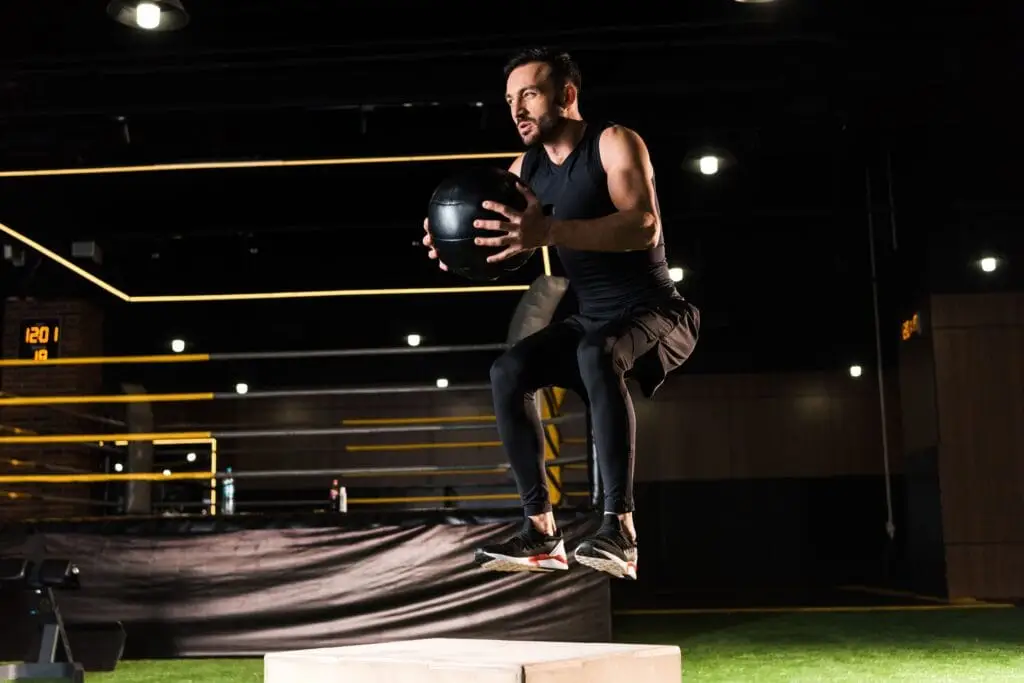
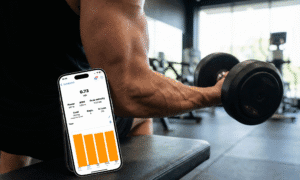
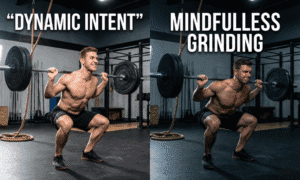
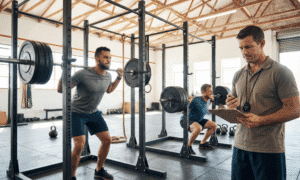
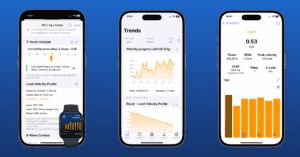
Un commento
Ottimi consigli! Non avevo mai pensato di integrare esercizi per i tempi di reazione nella mia routine. Le informazioni sugli aspetti fisici e mentali sono state davvero utili. Non vedo l'ora di provare questi esercizi!